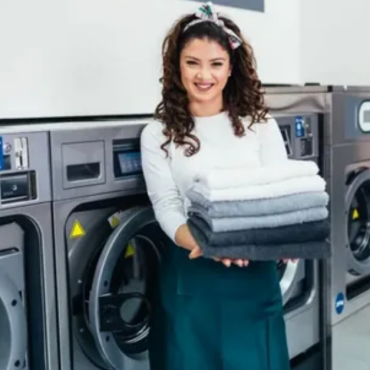7 Laundry Tips And Tricks
For fresh-scent laundry, sort clothes by fabric, use the right detergent, and avoid overloading the machine. Dry clothes properly to prevent musty odors.
Laundry day doesn’t have to be a daunting task. With the right tips and tricks, you can make washing clothes easier and more efficient. Proper sorting, correct detergent usage, and appropriate washing techniques ensure your clothes stay fresh and clean.
Avoiding common mistakes, such as overloading the washing machine, helps in achieving better results. Effective drying methods play a crucial role in maintaining a pleasant scent. Implementing these strategies not only keeps your laundry smelling fresh but also extends the life of your garments. Embrace these simple yet effective laundry tips to enjoy clean, fresh-scented clothes every time
Choosing The Right Laundry Detergent Liquid
Doing laundry might seem like a simple task, but choosing the right detergent liquid can make all the difference. Fresh Scent Laundry, the best laundry service in Dubai, knows the importance of this step. Here are some tips to help you select the perfect detergent for your clothes, ensuring they come out clean and smelling fresh.
Consider Your Fabric Type Before Laundry
Different fabrics require different care. Understanding your fabric type is crucial for choosing the right detergent. Using the wrong detergent can damage your clothes or reduce their lifespan. Here are some fabric-specific tips:
- Cotton: A standard liquid detergent works well. Cotton is durable and can handle stronger detergents.
- Wool and Silk: Use a gentle detergent. These fabrics are delicate and can get damaged easily.
- Synthetics (Polyester, Nylon): Use a detergent designed for synthetic fabrics. They often require less detergent to get clean.
- Denim: Choose a detergent that’s tough on stains but gentle on the fabric to keep your jeans looking new.
For a quick reference, consider this table:
| Fabric Type | Recommended Detergent |
| Cotton | Standard Liquid Detergent |
| Wool and Silk | Gentle Detergent |
| Synthetics | Detergent for Synthetic Fabrics |
| Denim | Stain-Fighting but Gentle Detergent |
By considering your fabric type, you can select a detergent that will keep your clothes looking their best.
Understanding Different Detergent Types
There are many detergent types available. Each type has its own benefits. Here are the main types of detergents:
- Liquid Detergent: Great for pre-treating stains. It works well with cold water and is effective on grease and oil stains.
- Powder Detergent: Ideal for general washing. It’s often more affordable and works well on ground-in dirt and clay.
- Pods/Capsules: Convenient and pre-measured. They prevent overuse of detergent and are easy to store.
- High-Efficiency (HE) Detergent: Specifically designed for HE washers. It produces fewer suds and cleans efficiently with less water.
Here’s a comparison table to help you choose:
| Detergent Type | Benefits |
| Liquid | Pre-treat stains, works with cold water, tackles grease |
| Powder | Cost-effective, great for dirt, long shelf life |
| Pods/Capsules | Pre-measured, convenient, space-saving |
| High-Efficiency | Low suds, water-efficient, designed for HE washers |
Understanding the different detergent types helps you choose the right one for your laundry needs. Fresh Scent Laundry, the best laundry service in Dubai, recommends finding a detergent that suits your lifestyle and washing preferences.
Sorting Clothes Properly
Doing laundry can be a chore, but with the right tips and tricks, it can become a breeze. One of the most important steps in achieving fresh and clean laundry is sorting clothes properly. Proper sorting ensures that your clothes come out looking their best and last longer. Here are some expert tips on how to sort your laundry for the best results.

Separate By Color
Separating clothes by color is crucial to prevent color bleeding. Mixing dark and light clothes can cause dark dyes to transfer onto lighter fabrics. Follow these simple steps to sort by color:
- Whites: Keep all white items together. This includes t-shirts, socks, and underwear.
- Lights: Light-colored clothes like pastels, light blues, and pinks go in this pile.
- Darks: Dark items like black, navy, and dark red should be washed together.
- Brights: Brightly colored clothes, such as reds, yellows, and bright blues, need their own pile.
Creating separate piles helps keep colors vibrant. Here’s a quick reference table:
| Color Category | Examples |
| Whites | T-shirts, socks, underwear |
| Lights | Pastels, light blues, pinks |
| Darks | Black, navy, dark red |
| Brights | Reds, yellows, bright blues |
Sort By Fabric Weight
Sorting by fabric weight is essential to protect delicate items and improve drying efficiency. Heavier fabrics can damage lighter ones if washed together. Use these guidelines:
- Heavy fabrics: Towels, jeans, and sweatshirts should be washed separately.
- Medium-weight fabrics: T-shirts, cotton dresses, and sheets fall into this category.
- Light fabrics: Lingerie, silk, and lightweight blouses need special attention.
Washing similar fabric weights together ensures an even wash and spin cycle. Here’s a breakdown:
| Fabric Weight | Examples |
| Heavy | Towels, jeans, sweatshirts |
| Medium | T-shirts, cotton dresses, sheets |
| Light | Lingerie, silk, lightweight blouses |
Sorting by fabric weight not only preserves your clothes but also reduces drying time.
Pre-treating Stains Effectively
Washing clothes can sometimes be a daunting task, especially when dealing with stubborn stains. Pre-treating stains effectively is essential to achieve a spotless and fresh-smelling wardrobe. In this blog post, we’ll share seven invaluable laundry tips and tricks to help you conquer those pesky stains.
Identifying Common Stains
Before you can treat a stain, you need to identify its type. Different stains require different treatments. Here are some common stains and how to identify them:
- Food Stains: These include ketchup, mustard, and chocolate. They often leave colorful marks.
- Oil and Grease Stains: Butter, cooking oil, and salad dressing cause these. They usually appear dark and shiny.
- Ink Stains: Pens and markers can leave black or blue marks on fabrics.
- Grass Stains: Kids playing outside can bring these green stains home.
- Blood Stains: These are red and can be tricky if not treated quickly.
Identifying the stain helps you choose the right pre-treatment method. This ensures you don’t damage your clothes while trying to remove the stain.
| Stain Type | Appearance |
| Food Stains | Colorful marks |
| Oil and Grease Stains | Dark and shiny |
| Ink Stains | Black or blue marks |
| Grass Stains | Green marks |
| Blood Stains | Red marks |
Applying The Right Pre-treatment Methods
Once you’ve identified the stain, it’s time to apply the right pre-treatment method. Here are some effective methods for common stains:
- Food Stains: Use a mixture of dish soap and water. Gently scrub the stain with a soft brush.
- Oil and Grease Stains: Apply baking soda to absorb the oil. Then, use a small amount of dish soap to lift the stain.
- Ink Stains: Dab the stain with rubbing alcohol. Avoid rubbing as it can spread the ink.
- Grass Stains: Use a mixture of white vinegar and water. Scrub gently with a toothbrush.
- Blood Stains: Rinse with cold water first. Then, apply hydrogen peroxide directly to the stain.
Remember to test any treatment on a small, hidden area of the fabric first. This ensures the treatment won’t damage the fabric.
Pre-treating stains effectively can make a significant difference in your laundry results. By identifying the stain and using the right method, you can keep your clothes looking fresh and clean.
Optimizing Washing Machine Settings
Doing laundry might seem simple, but optimizing your washing machine settings can make a huge difference. From choosing the right water temperature to understanding cycle options, these tips will help you achieve fresh, clean clothes every time. Let’s dive into the art of optimizing washing machine settings.
Choosing The Correct Water Temperature
Water temperature plays a crucial role in laundry. Choosing the correct water temperature ensures clothes are clean and fabric remains intact. Here’s a guide to help:
- Cold Water (60-80°F): Best for dark colors, delicate fabrics, and lightly soiled clothes. Saves energy and reduces shrinking.
- Warm Water (90-110°F): Ideal for synthetic fabrics, towels, and moderately soiled garments. Balances cleaning power and fabric care.
- Hot Water (120-140°F): Perfect for whites, heavily soiled items, and sturdy fabrics. Kills germs and removes tough stains.
Using the right temperature enhances cleaning efficiency and preserves fabric quality. Below is a quick reference table for water temperature settings:
| Temperature | Best For |
| Cold (60-80°F) | Dark colors, Delicates |
| Warm (90-110°F) | Synthetics, Towels |
| Hot (120-140°F) | Whites, Heavily soiled items |
Remember, always check garment labels for recommended washing temperatures to avoid damage.
Understanding Cycle Options while laundry
Knowing your washing machine’s cycle options is essential. Each cycle is designed for specific fabric types and soil levels. Here’s a breakdown:
- Normal/Regular Cycle: Best for cottons, linens, and heavily soiled items. Uses fast agitation and a lengthy wash time.
- Delicate/Gentle Cycle: Ideal for delicate fabrics like silk and wool. Uses slow agitation and a shorter wash time.
- Permanent Press Cycle: Designed for synthetic fabrics. Reduces wrinkles with medium agitation and a cool-down rinse.
- Heavy-Duty Cycle: Perfect for towels, bed linens, and heavily soiled items. Uses strong agitation and a longer wash time.
- Quick Wash Cycle: Suitable for lightly soiled clothes and small loads. Provides a fast, efficient clean.
Understanding these options helps in choosing the right cycle for each load. Below is a quick reference table for cycle options:
| Cycle | Best For | Agitation | Wash Time |
| Normal/Regular | Cottons, Linens | Fast | Long |
| Delicate/Gentle | Silk, Wool | Slow | Short |
| Permanent Press | Synthetics | Medium | Medium |
| Heavy-Duty | Towels, Linens | Strong | Long |
| Quick Wash | Lightly Soiled | Fast | Short |
Using the correct cycle ensures clothes are clean and well-cared-for. Always refer to the manufacturer’s manual for specific settings and recommendations.
Preserving Fabric Quality
When washing clothes, keeping them fresh and clean is essential. But, ensuring that your fabrics remain in top-notch condition is equally important. Preserving fabric quality extends the lifespan of your favorite garments, keeping them looking new and feeling soft. Here are some expert tips to help you protect your fabrics while doing laundry.
Using Fabric Softeners Wisely
Fabric softeners can make your clothes feel soft and smell delightful. Yet, using them the right way is crucial to avoid damaging your garments. Follow these tips to use fabric softeners effectively:
- Read the Labels: Always check the care labels on your clothes. Some fabrics, like microfiber and athletic wear, can lose their moisture-wicking properties if exposed to fabric softeners.
- Measure Correctly: Use the recommended amount of fabric softener. Overusing can lead to a buildup on your clothes, making them feel greasy and reducing their absorbency.
- Dilute Before Use: Dilute fabric softener with water before adding it to the washing machine. This helps distribute it evenly and prevents spots or stains on the fabric.
Here’s a quick reference table for fabric softener use:
| Fabric Type | Use Fabric Softener? |
| Microfiber | No |
| Cotton | Yes |
| Wool | Yes |
| Activewear | No |
By following these tips, you can keep your clothes soft and fresh without compromising their quality.

Avoiding Over-drying
Over-drying clothes can cause them to shrink, fade, and weaken the fibers. To avoid over-drying, consider these practices:
- Check the Labels: Always follow the drying instructions on the care labels. Each fabric has a different tolerance to heat and drying time.
- Use Low Heat: Opt for a lower heat setting on your dryer. High heat can damage fibers and cause shrinkage.
- Remove While Damp: Take clothes out of the dryer while they are still slightly damp. This reduces the risk of over-drying and makes ironing easier.
- Use Drying Racks: For delicate fabrics, use drying racks instead of the dryer. Air drying is gentler on fabrics and preserves their quality.
Here’s a simple guide to optimal drying settings:
| Fabric Type | Optimal Drying Setting |
| Denim | Low Heat |
| Cotton | Medium Heat |
| Synthetic | Low Heat |
| Wool | Air Dry |
By carefully managing your drying process, you can maintain the integrity and look of your favorite clothes for a longer time.
Drying Techniques For Different Fabrics in Laundry
Doing laundry can be a chore, but with the right tips and tricks, it can be a breeze. This blog post will share 7 Laundry Tips and Tricks for Washing Clothes with a focus on Drying Techniques for Different Fabrics. Knowing how to dry various fabrics ensures your clothes stay in great condition and last longer.
Air-drying Delicates
Delicate fabrics like silk, lace, and fine knits need special care. Air-drying is the best method to preserve their quality. Here are some tips:
- Use a drying rack: Lay your delicates flat on a drying rack to maintain their shape and prevent stretching.
- Avoid direct sunlight: Sunlight can cause fading. Place the drying rack in a well-ventilated area away from direct sun.
- Turn garments inside out: This helps protect the fabric’s outer surface from dust and potential damage.
- Use a towel for extra support: Lay a clean towel under your delicate items to absorb excess moisture and speed up drying.
Here’s a quick comparison of air-drying vs. machine drying for delicates:
| Method | Pros | Cons |
| Air-Drying | Preserves fabric quality, prevents shrinking | Takes longer to dry |
| Machine Drying | Faster drying time | High heat can damage delicate fabrics |
Utilizing Dryer Balls For Efficiency
Dryer balls are a fantastic tool to improve your drying efficiency. They help separate clothes in the dryer, allowing hot air to circulate more effectively. Here’s how to use them:
- Choose the right type: Wool dryer balls are natural and reduce static. Plastic dryer balls are durable and effective at separating clothes.
- Use multiple balls: Place three to six dryer balls in the dryer with your laundry. More balls result in quicker drying.
- Add essential oils: For a fresh scent, add a few drops of essential oil to the dryer balls before starting the cycle.
Benefits of using dryer balls include:
- Reduced drying time: Dryer balls help clothes dry faster, saving time and energy.
- Softer clothes: Dryer balls naturally soften fabrics without the need for chemical softeners.
- Less static cling: Wool dryer balls reduce static, making clothes easier to handle and wear.
Using dryer balls is an eco-friendly and efficient way to enhance your laundry routine.
Maintaining Freshness And Scent
Keeping clothes fresh and smelling delightful is a common goal for many. The right techniques can extend the freshness and scent of your laundry. Here are some practical tips to help you achieve that.
Utilizing Scent Boosters
Scent boosters are an excellent way to enhance the smell of your laundry. They come in various forms, such as beads, pods, and liquids. Adding these to your wash can make a noticeable difference.
Consider these options:
- Scented Beads: Add these directly to the drum before placing your clothes. They dissolve during the wash, releasing pleasant fragrances.
- Liquid Boosters: Pour these into the fabric softener compartment. They mix with the water, ensuring every piece of clothing gets an equal amount of scent.
- Pods: Toss these into the washing machine with your clothes. They dissolve completely, leaving no residue.
For best results, follow the manufacturer’s instructions. Overusing boosters can lead to buildup on clothes and washing machines.
Here’s a quick comparison table:
| Type | Application | Pros | Cons |
| Scented Beads | Directly in drum | Long-lasting scent | Can leave residue if overused |
| Liquid Boosters | Fabric softener compartment | Even distribution | Possible buildup |
| Pods | With clothes | Convenient | May not dissolve fully in cold water |
Storing Clothes Properly
Proper storage is crucial to maintain the freshness and scent of your clothes. Here are some tips to help you store your laundry effectively:
- Use Breathable Containers: Store clothes in breathable bags or bins. This prevents moisture buildup and keeps clothes smelling fresh.
- Add Scented Sachets: Place lavender or cedar sachets in drawers and closets. These natural scents deter pests and add a pleasant aroma.
- Avoid Overcrowding: Give your clothes space to breathe. Overcrowded spaces trap moisture and lead to musty smells.
- Keep Away from Direct Sunlight: Direct sunlight can fade colors and reduce fabric strength. Store clothes in a cool, dry, and dark place.
- Regularly Clean Storage Areas: Dust and clean your storage spaces to avoid dirt and unpleasant odors.
Follow these tips to ensure your clothes remain fresh and scented for longer periods. Proper storage not only preserves the freshness but also extends the life of your garments.
Eco-friendly Laundry Practices
Doing laundry can be both a chore and a necessity, but it doesn’t have to be harmful to the environment. Adopting eco-friendly laundry practices can save energy, reduce water usage, and minimize pollution. Here are some tips to make your laundry routine more sustainable and still achieve that fresh scent we all love.
Using Cold Water For Energy Efficiency
Washing clothes in cold water is a simple yet effective way to save energy. Cold water requires less electricity than hot water, reducing your carbon footprint. Most modern detergents are formulated to work well in cold water, ensuring your clothes get clean without the need for high temperatures.
- Saves energy: Using cold water can cut energy usage by up to 90%.
- Prolongs fabric life: Cold water is gentler on fabrics, reducing wear and tear.
- Prevents color bleeding: Cold water helps keep colors vibrant and prevents bleeding.
Below is a quick comparison of energy usage between hot and cold water washes:
| Water Temperature | Energy Usage (kWh) |
| Hot | 4.5 kWh |
| Cold | 0.3 kWh |
Switching to cold water is an easy change that can make a big difference. It not only conserves energy but also helps you save on utility bills. So next time you’re doing laundry, turn the dial to cold and enjoy the benefits.
Choosing Biodegradable Detergents
Traditional detergents often contain chemicals that can harm the environment. Biodegradable detergents, on the other hand, break down more easily and are less toxic. They are made from natural ingredients, making them a safer choice for both your clothes and the planet.
- Reduces pollution: Biodegradable detergents are less likely to pollute water sources.
- Safe for sensitive skin: Natural ingredients are gentler on the skin.
- Effective cleaning: These detergents are designed to clean just as well as traditional ones.
Here’s a quick look at the advantages of using biodegradable detergents:
| Feature | Biodegradable Detergents | Traditional Detergents |
| Environmental Impact | Low | High |
| Skin Sensitivity | Gentle | Harsh |
| Ingredients | Natural | Chemical-based |
Switching to biodegradable detergents is a small step that can lead to significant positive impacts. By making this choice, you contribute to a healthier planet while ensuring your clothes stay clean and fresh.
Frequently Asked Questions
How To Remove Tough Stains From Clothes?
Pre-treat tough stains with a stain remover before washing. Rub gently and let it sit for 10-15 minutes. Wash as usual.
What Temperature Should I Wash My Clothes?
Most clothes wash well in cold water. It saves energy and prevents shrinking and color fading.
Can I Mix Different Fabrics In One Wash?
Yes, you can mix fabrics. However, separate delicates and heavy fabrics to avoid damage. Use a gentle cycle.
How Often Should I Clean My Washing Machine?
Clean your washing machine every month. Use a washing machine cleaner or a mixture of vinegar and baking soda.
Achieving fresh, clean laundry is simple with these seven tips and tricks. Implement these methods to maintain vibrant, long-lasting clothes. Fresh Scent Laundry ensures every wash leaves your garments smelling delightful. Embrace these practices for efficient, stress-free laundry days. Enjoy the satisfaction of perfectly washed clothes every time.





